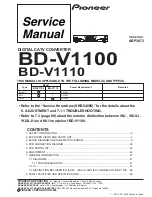
14
©
2015 Sensata Technologies
2.0 Installation
2.4.2 DC Overcurrent Protection
For safety reasons and to comply with electrical code regulations, DC
overcurrent protection must be provided as part of the installation. The DC
overcurrent protection device must be installed in the positive DC cable line,
it can be a fuse (with a disconnect switch) or a circuit breaker and must be
DC-rated. It must be correctly sized according to the size of DC cables being
used, which means it is required to open before the cable reaches its maximum
current carrying capability, thereby preventing a
fi
re. The NEC requires both
overcurrent protection and a disconnect switch.
Because batteries can deliver thousands of amps in an instant during a short,
you are required to install a DC-rated fuse (or circuit breaker) that has a
interrupt current rating (known as Amps Interrupting Current or AIC) that can
withstand the short-circuit current without explosion or damage. If a fuse is used
as an overcurrent device, a Class-T type or equivalent is highly recommended
when used with inverters. A Class-T fuse is rated for DC operation, can handle
very high short-circuit currents (up to 100,000 amps), and has a time delay
that allows for momentary current surges from the inverter without opening
the fuse. In some installations, if the combined short-circuit current of all the
batteries in the bank is determined to be 2,700 amps or less, then an ANL type
of fuse may be used—if in doubt, use a Class-T fuse. See Table 2-2 for the fuse
size (coordinated with the DC wire size) recommended for your CSW inverter.
2.4.3 DC
Grounding
The inverter should always be connected to a permanent, grounded wiring
system. The idea is to connect the metallic chassis of the various enclosures
together to have them at the same voltage potential, to reduce the possibility
for electric shock. For most installations, the inverter chassis and the negative
battery conductor are connected to the system’s ground bond via a safety
grounding conductor (bare wire or green insulated wire) at only one point in
the system. The grounding conductor for the DC system shall meet the sizing
requirements speci
fi
ed in the NEC for the application, but must be no smaller
than 8 AWG copper.
For instance: An inverter used in a marine application under
ABYC guidelines requires the size of the DC grounding conductor to be of an
ampacity equal to or one size less than that of the DC positive conductor.
See
Table 2-2 for the minimum ground wire size recommended for your inverter.
Info:
If the inverter is installed in a vehicle, connect the battery
negative cable directly to the inverter’s negative terminal. DO NOT
connect the negative battery cable meant for the inverter to the
vehicle’s frame/safety ground.
2.4.4 DC Cable Connections
Do not put anything between the battery cable ring lug and the battery
post (see Figure 2-7), or the
fl
at metal part of the inverter’s DC terminal
(see Figure 2-8). When connecting the battery cable, it should be placed
directly against the battery post or inverter terminal. Incorrectly installed
hardware causes a high resistance connection which could lead to poor
inverter performance, and may melt the cable and terminal connections.
See Table 2-1 for the torque requirements.
Info:
The DC terminal and Hex nuts on the CSW1012 and CSW2012
are made of stainless steel, which has a high likelihood of galling or
thread seizing while being tightened—causing the bolts to strip or
to snap/break off. To reduce this risk, use an anti-seize lubricant,
tighten the fasteners slowly (at low rpms) without interruption, and
apply only light pressure.












































